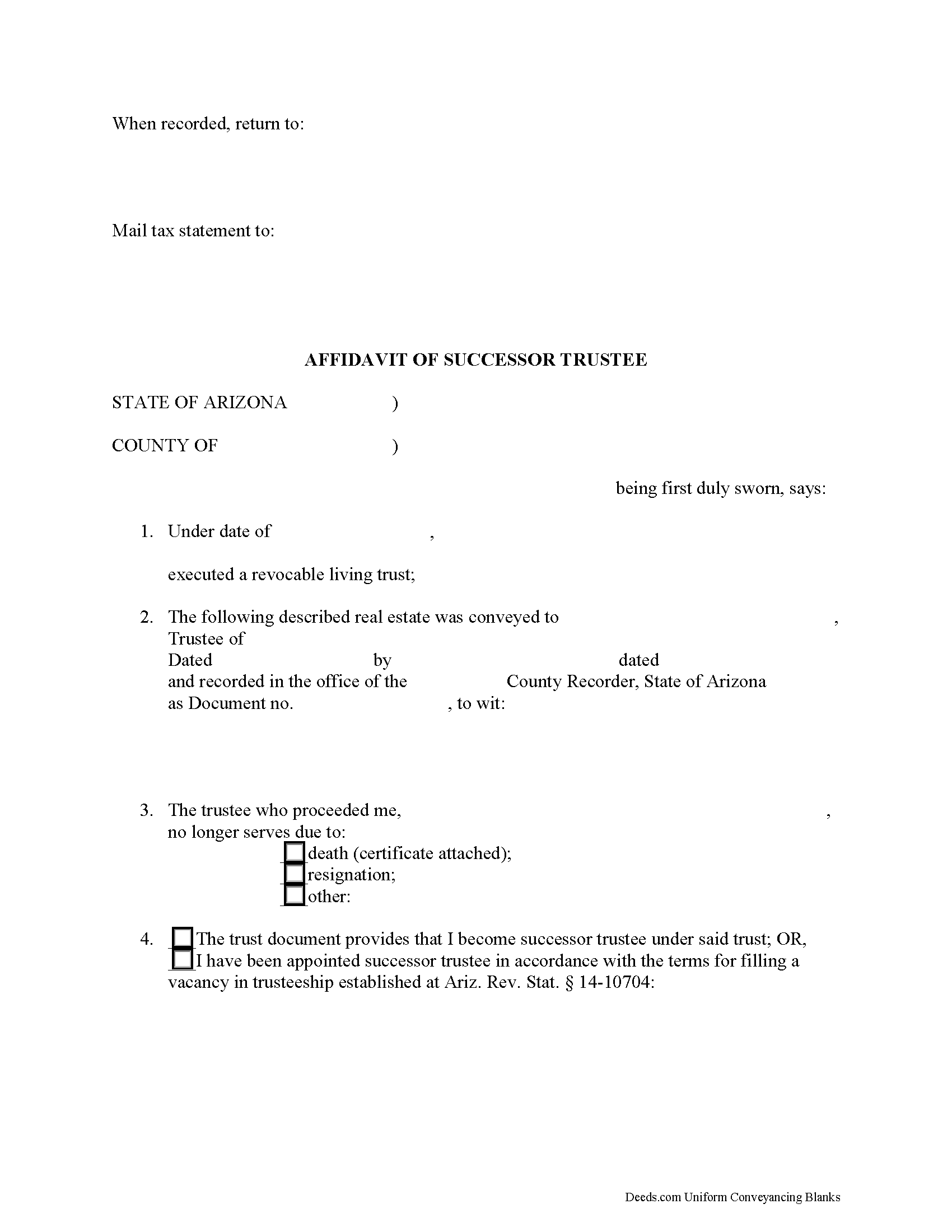Download Arizona Affidavit of Successor Trustee Legal Forms

Arizona Affidavit of Successor Trustee Overview

To transfer real property in a living trust from a trustee to a successor, the successor trustee executes and records an affidavit of successor trustee. The document contains sworn statements confirmed in the presence of a notary public, and provides notice that the successor has assumed the authority of the preceding trustee relevant to real property held in trust.
In addition to naming the affiant (the person making the sworn statements; in this case, the successor trustee), the affidavit contains the basic details about the trust for which the successor is assuming trusteeship, including its name, date, and settlor (person who created or contributed assets to the trust).
The form also requires information about the deed transferring the subject real property into trust, including the type and date of the deed, its location on record, and the grantee of the deed. The grantee is generally the preceding trustee who held title to the property. Because the affidavit confirms the successor's authority regarding the real property, the form also requires the legal description of said property. Further, the affidavit contains the details concerning the change in trusteeship.
It is not uncommon that an affidavit of successor trustee be referred to by a different name. For instance, an affidavit of death of trustee accomplishes the same task, but is obviously only useful when the preceding trustee has died. But what happens when the trustee has resigned, or another circumstance, such as removal, prevents the trustee from serving?
When a trust is served by multiple trustees and a vacancy occurs, the remaining co-trustees may act for the trust (14-10703(B)). However, Arizona statutes require a vacancy in individual trusteeship to be filled (and therefore, an affidavit of successor trustee to be recorded) in the following six cases: when a designated trustee rejects the trusteeship; when the designated trustee cannot be identified; when the trustee resigns; when the trustee is disqualified or removed; when the trustee dies; or when a guardian or conservator is appointed for an individual serving as a trustee (Ariz. Rev. Stat. 14-10704). Statutes provide the court with authority to appoint a trustee when "necessary for the administration of the trust," regardless of a vacancy ( 14-10704(E)).
A successor trustee may be designated in the original trust document (the instrument a settlor uses to establish a trust), or filled in the order provided for by statute: 1) by a person who is appointed by a person who has authority in the trust instrument to appoint a successor trustee; 2) by a person appointed by unanimous agreement of the qualified beneficiaries; and, finally, 3) by a person appointed by the court ( 14-10704(C)). (Note: this applies to noncharitable trusts only.)
Before recording in the county wherein the real property described in the affidavit is situated, the affiant must sign the document in the presence of a notary public. The form should adhere to content and formatting requirements for recording documents pertaining to interests in real property in the State of Arizona.
Contact a lawyer with questions.